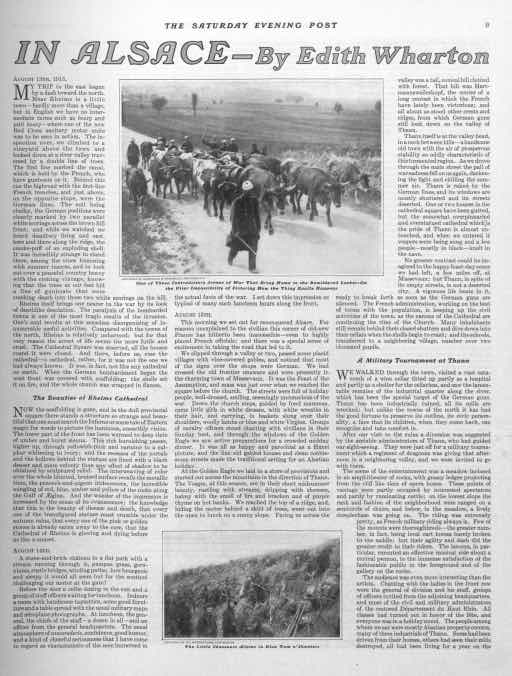Edith Wharton: War Reporter?
Edith Wharton, who was born 155 years ago today, is best remembered for her Pulitzer Prize-winning novel, The Age of Innocence. Though she often wrote about American high society, she was well aware of the sufferings of the disadvantaged. During the First World War, she helped set up shelters for the thousands of refugees streaming into Paris from Belgium. She gathered clothing and food and raised money for the relief efforts. Her Children of Flanders Rescue Committee sheltered almost 900 refugee children and their families.
She was recognized for her work in 1916, when the French government awarded her the prestigious Legion of Honor. Appreciative French officials also gave her permission to visit the front lines and report on the fighting. She toured the French lines from Dunkirk to Belfort, in eastern France.
“In Alsace,” which appeared in the November 20, 1915, issue of the Post, she prominently mentions the destruction of the cathedral at Rheims. At this early point of the war, before the casualties reached into the millions, the German shelling of the cathedral could still be considered one of the worst results of the war.
Another interesting point about Wharton’s report is her mention of the French cavalry. In previous European wars, the cavalry had been greatly feared by the common soldier. But the arrival of the machine gun eliminated any threat posed by men on horseback with lances.
The front lines of the war had stabilized a few miles outside of Rheims, and would remain there for the next three years. In 1918, it would see Germany’s last, desperate attempt to win the war with a new offensive. The Germans started falling back and continued to withdraw for the next 100 days until they signed the armistice.
Alsace was not only the most forward position of the French army, its recapture was a matter of pride to the French, which had surrendered it in the Franco-Prussian War. The fighting in this region was so important to the national cause that no visitors, including high-ranking officials, were permitted to enter.
It is a mark of the high regard the French government felt for Edith Wharton that she was allowed to visit this crucial point of the western front.
Featured image: Edith Wharton (Beinecke Rare Book & Manuscript Library, Yale University/ Public Domain)
